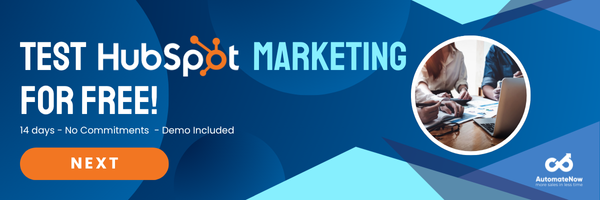Discover how to optimise your HubSpot portal with key insights from a Top HubSpot Partner.
A clean start is crucial for a robust and efficient HubSpot portal. When importing data, ensure it is clean and deduplicated to prevent downstream issues. This step is essential whether you are uploading legacy CRM data or importing event attendees from an external system.
Before you import, take advantage of HubSpot's feature to download an example file tailored to your specific needs. This will help you organise your data correctly and avoid any complications later on.
Properly formatted and clean data ensures your CRM functions smoothly, allowing for accurate reporting and effective automation. Consistently maintaining this standard will save you time and effort, providing a solid foundation for all subsequent CRM activities.
Custom HubSpot Properties for Better Data Management
HubSpot allows extensive customisation to align with your business logic and CRM needs. Custom properties are vital for capturing specific information that the default settings might not cover. For example, you can add a "Customer Tier" dropdown to segment accounts into categories like active or dormant. This helps in tracking product usage stages for SaaS clients or any other unique business requirements.
Watch Webinar: HubSpot Health Check: Perfect Your Portal

Adding new properties directly from the contact or company's homepage can streamline the process, making it quicker and more intuitive. Custom properties enable you to personalise your CRM to reflect the nuances of your business, ensuring that all relevant data is captured and easily accessible.
Validate Inputs to Ensure Data Accuracy
Maintaining data accuracy is crucial for effective CRM management. HubSpot's property validation rules help ensure consistency and completeness across your records.
For instance, you can set rules to ensure email domains follow a corporate format or phone numbers are correctly formatted.
This step is particularly useful when dealing with large datasets or when data is inputted through forms.

Validation rules can also help in standardising data formats, making it easier to analyse and utilise. By setting these rules, you can prevent errors and maintain a high level of data integrity, which is essential for reliable reporting and automation.
Lifecycle Stages: Track Every Step of the Journey
Understanding where each contact is in their journey with your business is critical for effective CRM management. HubSpot's lifecycle stages allow you to track this journey, from the initial contact to becoming a customer and beyond. Customising these stages to fit your business model can provide valuable insights into your sales and marketing efforts.
Automations can further enhance this process by syncing lifecycle stages between contacts and their associated companies. This ensures that your data is always up-to-date and accurately reflects the current status of each contact. Implementing lifecycle stages helps in analysing lead-to-customer conversion trends and triggering automations when a contact becomes a customer.
Associating Records for Seamless Connections
Properly associating records in HubSpot is crucial for maintaining a comprehensive view of your contacts, companies, deals, and tickets. This ensures that all related information is linked, providing a complete picture of each entity. Creating new records, such as deals, directly from within a company or contact record can streamline this process.
For example, tying multiple contacts to a single enterprise account or linking deals and tickets to company records can provide valuable insights and improve efficiency.
Proper associations help in tracking interactions and relationships, making it easier to manage and analyse your CRM data.
Manage User Permissions for Data Security
Data security is paramount, especially when multiple users access your CRM. HubSpot allows you to set clear roles and permission sets to control data access. This ensures that sensitive information is only accessible to authorised users. For instance, you can restrict billing contacts to finance users only or give sales teams access to deal information but not marketing workflows.
Managing user permissions helps in maintaining data integrity and security, preventing unauthorised access and potential data breaches. It also ensures that users have access to the information they need to perform their roles effectively, improving overall efficiency.
Activate the Data Quality Command Centre
HubSpot's Data Quality Command Centre is a powerful tool for cleaning, standardising, and monitoring your CRM data. It provides a comprehensive overview of your data quality, highlighting issues such as missing contact owners or duplicate companies based on domain.

Example of HubSpot workflow with marketing contact assignment.
Using this tool, you can monitor and manage data anomalies, ensuring that your CRM data remains accurate and reliable. The command centre helps in identifying and resolving data quality issues, providing a centralised location for all your data management needs. This ensures that your CRM data is always in top condition, ready for analysis and automation.
Automate Status Updates for Efficient Operations
Automation is key to efficient CRM management. HubSpot's workflows allow you to automate status updates based on user behaviour or property changes. For example, you can set a contact as "Marketing" after a form submission or remove their marketing status after six months of inactivity.
Automating these updates ensures that your CRM data is always current, reducing the need for manual updates and improving efficiency. It also allows you to respond quickly to changes in user behaviour, ensuring that your marketing and sales efforts are always aligned with the latest data.
By following these essential setup checks, you can perfect your HubSpot portal, ensuring that your CRM database is clean, actionable, and ready for automation. This will provide a solid foundation for all your sales and marketing activities, helping you achieve your business goals more effectively.




